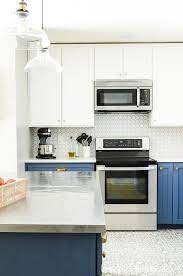It’s not always easy to decide where in the house to put the radiators. Window location, aesthetics, and heat output are just a few of the many things to think about. To help you decide where to put your radiators, we’ve compiled this helpful guide. 1800 horizontal column radiator available in new styles for making winter perfect.
Where to Place Radiator
Windows used to be the optimal location for radiators. This was due to the fact that this was often the room’s coolest spot. Because of the draughts caused by the single pane of glass, the Radiator was strategically placed beneath the window to warm the air as it convicted through the window sill. Now that most houses have double-glazed windows and buildings are highly insulated, Heat can be dispersed more effectively, and radiators may be placed wherever in a room. Therefore, the location of your Radiator is no longer a functional issue but rather a design one.
Placing a Radiator in The Coldest Area
In order to maximize heating efficiency, radiators are often installed in the room’s coldest corners. Whether it’s against the wall or below a window, this is because the conduction of Heat is enhanced by the presence of the incoming cold air, which then forces the hot air from your Radiator towards the center of the room. However, modern insulation design has made great strides, and many houses no longer have isolated ‘cold zones.
Don’t Hide Heat
Making sure the Radiator is not blocked by anything, including furniture or drapes, can maximize its heating performance. Putting the couch in front of it or closing the floor-to-ceiling drapes around it won’t make the room any warmer. Because the Heat is being absorbed by the couch’s or curtains’ backing, the room’s surface area will be significantly chilled. The heating system will have to work much more to maintain an environment warm enough for your comfort. Not only will your energy costs rise, but your boiler will be overworked and more likely to break down.
Don’t Be Afraid to Move the Pipes
It’s possible that you think it’s best not to change anything because the necessary plumbing is already installed. However, if you believe the Radiator would look better in a different spot and the existing location doesn’t work, it’s probably worth the additional work to move the piping.
Use The Wall
A radiator that is more aesthetically pleasing gives you more alternatives for where to put it in your home. In place of a traditional picture or painting, you may save space and provide design flexibility by hanging an art radiator in the room’s focal point. Vertical radiators are a great way to make the most of a small, difficult area while also giving the impression that the room is more spacious than it really is. You may make a room seem bigger and brighter by placing a mirror radiator opposite a window. These days, designer radiators aren’t something to throw in as an afterthought—they need to be included throughout the planning phase.
What About Behind a Door?
When asked whether a radiator may be installed behind a door, this is a common request from homeowners. Knowing that you can conceal a radiator behind a door gives you another alternative if there is no other wall space available. The only time this becomes an issue is if the area leading from the entrance into the room is chilly, such as the landing on the second floor. It’s also important to note that there must be enough clearance for the door to be opened. So, use a different wall if you have access to one.
Don’t Be a Slave to Plumbing and Pipework
Perfect! Your next radiator installation will go smoothly if the existing plumbing and pipes are in the right places. But if you ever become tired of the same fixtures, you shouldn’t feel stuck with them. You may entirely free up the space by rearranging where your pipes are situated. By doing so, you’ll make room for a trendy radiator and free up important floor and wall space.
Other Considerations (Putting a Sofa in Front of a Radiator)
You shouldn’t put a couch directly in front of a radiator. The coach will soak up a lot of the Radiator’s Heat, which might lead to uneven heating in the room. Therefore, if you place a couch in front of your Radiator, it will be less effective, and you will need to increase the temperature to feel comfortable.
Full-Length Curtains
Full-length curtains, like blocking a radiator with furniture, may prevent warm air from a room’s Radiator from re-entering the room. You probably have this issue if you open your curtains and discover a warm spot. If you have a convector radiator, which emits Heat from above, you should not have curtains. Curtains may create a fire hazard and are the biggest problem with this layout.





